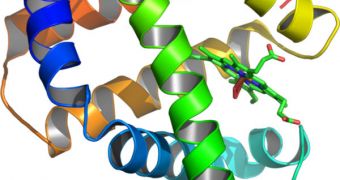A while back, researchers at the University of Missouri presented their MULTICOM system. The advanced computer software was touted as being capable of predicting the structure of proteins, a feat that made it of great interest to scientists. Being able to infer what a protein might look like is of incredible importance for medicine and bioengineering, as these molecules can be used to cure a wide variety of diseases.
However, not many have been researched to the point where they can be used without concern. In a bid to make this field of research move faster towards success, a US federal agency awarded additional funds to the University of Missouri team, for improving their system.
The US National Institutes of Health (NIH), through its National Institute of General Medical Sciences (NIGMS), awarded an additional $1.18 million to the group, for perfecting and further developing MULTICOM. “Proteins are fundamental molecules that are involved in many basic and important functions. The structure of a protein determines the function. When a protein folds abnormally, dysfunctions occur, which lead to diseases, such as Parkinson's disease, Alzheimer's and cancer,” explains MU College of Engineering assistant professor of computer sciences Jianlin Cheng.
“By converting protein sequences into predictable structures, scientists can view how a structure folds and thus predict how drugs will affect the protein. This information is useful when designing drugs and cures. A lot of advances have been made since this field was developed," Cheng said. "We are able to predict high-accuracy structures for about 50 percent of proteins, but we still have a lot of room for improvement,” the expert explains further. Cheng says that the recently-secured funding will be used to improve the computational technology underlying the prediction software.
When experts design drugs based on little-researched proteins, they risk making the agent very vulnerable to the actions of the immune systems. This means that, as soon as the drug makes its way into the bloodstream, it comes under attack from immune system cells, which recognize it as an intruder. This means that a very low amount of the active element actually gets to its destination, reducing its overall efficiency. This can be improved by designing better proteins, or by placing them inside nanoscale cages, which only open in contact with biomarkers on the target tissue.

 14 DAY TRIAL //
14 DAY TRIAL //